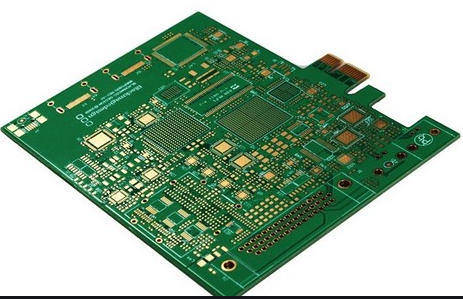Reflow soldering is a key process in SMT patch processing. Various unexpected situations may be encountered during work. If the correct handling method and necessary measures are not taken, serious safety and quality accidents may be caused.
1. Matters needing attention
1. The reflow soldering furnace must reach the set temperature completely (green light is on) before welding can be started.
2. The temperature change of each temperature zone is frequently observed during the welding process, and the change range is ±1 degree Celsius (according to the reflow soldering furnace).
3. When an abnormal situation occurs in the smt chip processing equipment, it should be shut down immediately.
4. The size of the substrate cannot be greater than the width of the conveyor belt, otherwise it is prone to board card accidents.
5. Before welding, the smt processing plant should take protective measures (shield) or refrain from reflow welding for components that cannot withstand the normal welding temperature in accordance with the provisions of the process documents or the component packaging instructions. Use manual welding or welding robots for post welding. .

6. During the process of SMT patch welding, strictly prevent the conveyor belt from vibrating, otherwise it will cause component displacement and solder joint disturbance.
7. Regularly measure the exhaust air volume at the air outlet of the reflow welding furnace. The exhaust air volume directly affects the welding temperature.
2. Emergency handling
1. Card board
1. If the board is stuck, do not send the board into the furnace.
2. Open the furnace cover and take out the plate.
3. Find out the cause and take measures.
4. When the temperature reaches the required temperature, continue welding.
2. Alarm
If an alarm occurs, stop welding, check the cause of the alarm, and deal with it in time
3. Sudden power outage
1. When there is a power failure, do not send the plates into the furnace again. Due to the support of each power supply after the UPS, the conveyor belt or rail will continue to run. After the surface assembly board runs to the furnace mouth and all the surface assembly boards are connected out, open the furnace cover and cool down before stopping the machine.
2. In unexpected situations, if the UPS is malfunctioning, clamp the square shaft of the motor at the exit with a movable wrench to rotate it, and transfer the PCB board from the furnace as soon as possible.
Why should SMT factories pay attention to the scene
(1) The "Three Present Principles" of "Site, Extant Things, and Reality"
The continuous improvement of the scene is considered to be the mystery of the success of Japanese companies. The "three present principles" of "site, present, and reality" embodies the importance of the site and the idea of continuous improvement, which is widely used in Japanese companies. The "site" is the place where products are manufactured and services are provided; the "real thing" is the main body of the site, which may be a malfunctioning machine, a substandard product, a damaged tool, or a customer who is complaining ; "Reality" is to analyze the real thing on the spot and solve the problems that occur.
The "three-present principle" emphasizes that management personnel go to the scene to analyze and solve problems with existing objects. When a problem occurs, the place to solve the problem should be the site, not the office or conference room. On the spot, the management personnel can usually find the problem and take countermeasures in time by inspecting the real thing, observing, touching, feeling, and combining their own experience.
The "three-present principle" was brought into play and developed into a "five-present technique": on-site, physical, reality, cash, and current recognition. The addition of "cash" and "present recognition" on the basis of the "three-present principle" means that the results of on-site improvement are converted into an amount to be confirmed, emphasizing the quantification and cost awareness of the improvement results. The essence of the "three-present principle" is to attach importance to the scene. As factory managers, the experience we have gained is: to solve on-site problems, we must go to the site.
(2) Laws for solving on-site problems
When solving on-site problems, the following steps should be followed, which are referred to here as the law of solving on-site problems:
The first step is to go to the scene when a problem occurs;
The second step is to check the real thing;
The third step is to take temporary countermeasures on the spot;
The fourth step is to analyze the reasons and find a permanent countermeasure;
The fifth step is to standardize and prevent recurrence.